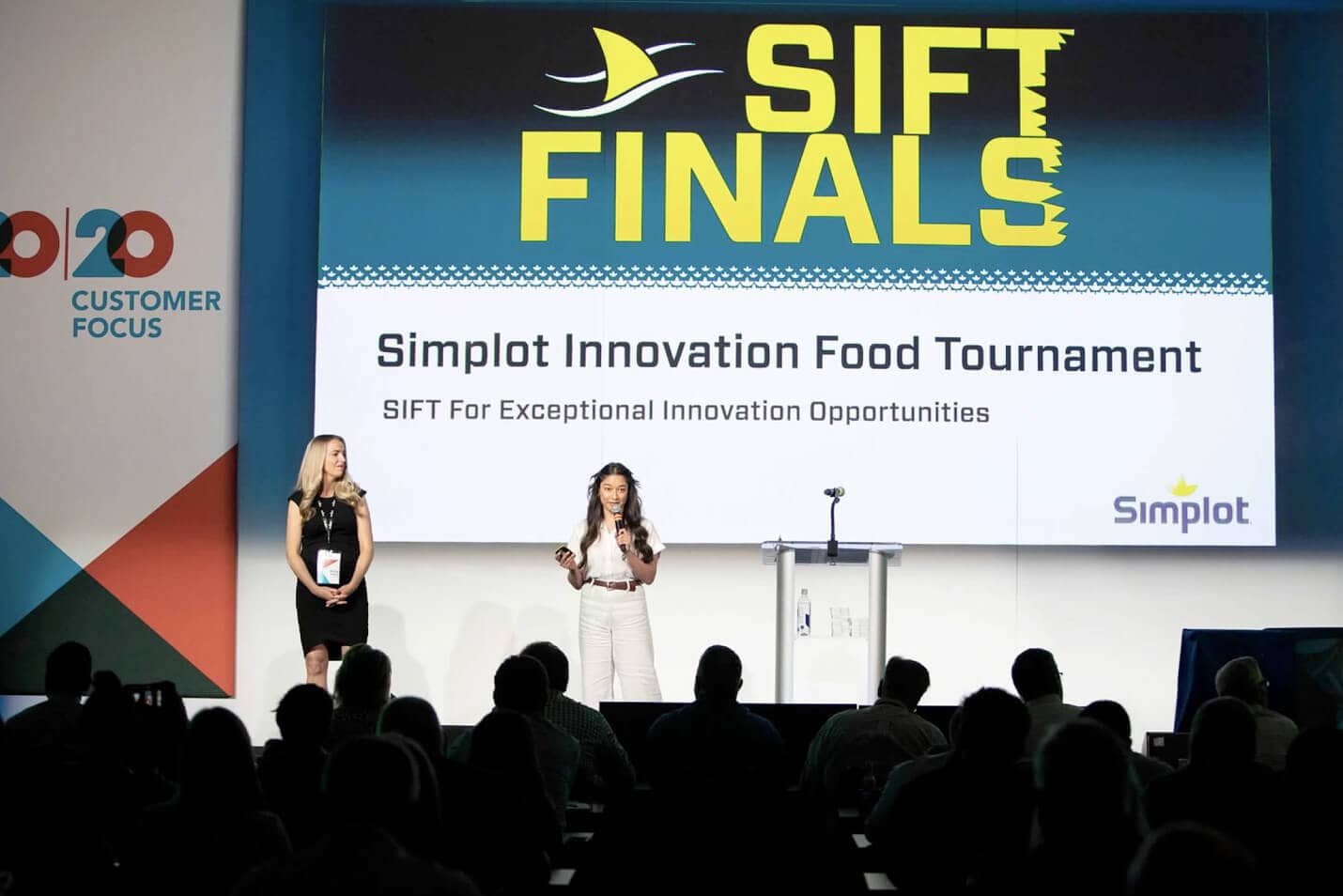How to Foster Innovation Culture (and Have Fun Doing It)
Oct 30, 2018
When we think of innovators, we often imagine the stereotypical lonely inventor, toiling away in an obscure laboratory until he or she hits on a brilliant idea that leads to fame and fortune.
These lonely innovators surely exist. But if it’s your job to increase the number and quality of innovations at your company, I know of something much more likely to deliver profitable new ideas than people working on their own.
I’m talking about teams—and not just R&D teams.
Over the course of my roles at Campbell Soup, Mars, Disney, and now the J.R. Simplot Company, I’ve seen firsthand that ideas truly can come from anywhere. However, teams made up of a wide array of people and disciplines, working together, are especially prolific.
Why teams? It’s human nature.
- Teams comprised of diverse skill sets overcome obstacles more quickly. There are so many talents necessary to bring a great idea to life—researching, prototyping, marketing and more. Teams can navigate the inevitable challenges to innovation that might otherwise paralyze innovators working alone.
- People uncomfortable contributing ideas on their own often feel more supported within the context of a team. For some, giving voice to ideas on their own can be a terrifying prospect. Supportive teams can provide the psychological safety everyone needs to share freely.
When I arrived at the J.R. Simplot Company two years ago, I knew Simplot had a long history of innovation—first in the food dehydration business during World War II, and most famously with invention of the frozen French Fry in 1953. Many more innovations followed.
In 2013, Simplot food scientist Bruce Walker came up with the industry’s first new fry shape in decades with invention of Simplot SIDEWINDERS™ Fries, a blockbuster product idea that, incredibly, came to him in a dream.
But Simplot’s leaders knew they needed to rely on more than Mr. Walker’s midnight inspiration to keep pace in the fast-moving food processing business; they set out to build a stronger culture of innovation company-wide and brought me in to help.
The solution? Creating fun and excitement by gamifying our innovation process a team innovation tournament we call SIFT.

SIFT was first piloted in the U.S. with a call for innovative ideas from Simplot Food Group domestic locations. More than 280 ideas for new food products were submitted online. Simplot’s Innovation Leadership Team selected 10 of the most promising ideas for further development. Ten cross-functional teams were organized to prototype, validate and improve on the original submissions.
After much sweat and effort, the innovators presented their concepts live on stage, in a final round, at the Simplot Global Sales Meeting in October 2018 to a panel of company executives and the Simplot family, as well as more than 400 of their colleagues. Beyond international bragging rights, each member of the winning team would take home cash prizes in the five figures.
Who selected the winners? Everyone in the room—from the CEO to management trainees—via electronic voting on their phones.
The audience hooted. The audience shouted. And the results exceeded even my high expectations. SIFT brought innovation to the forefront of our efforts. It electrified our people and proved to every man and woman at Simplot that each of us can be an innovator.
In 2019, we expanded SIFT to solicit new ideas from all of Simplot’s regions worldwide. SIFT Global yielded more than 350 ideas and a pipeline of seven exceptional innovation opportunities from each of the regions, including the U.S., Mexico, China, Japan, Korea, Southeast Asia and Australia.
Here are few helpful things we learned along the way:
- Put your trust in people, not processes. Inspire your teams and trust that good things will happen. They will! Engaging teams of people is the best way to unlock the full potential of your organization.
- Let the voice of your end users guide your innovation (but don’t let it be your only guide). It goes without saying that customer insights critical to developing meaningful innovation, especially at the start of the process. But remember, not all innovation comes from customers; many times your staff can intuit what customers need before customers know it themselves. Give your teams permission to follow both types of insights.
- Keep it simple. Make sure the template for competition entries isn’t so daunting that it discourages people from participating.
- Make sure it’s fun. When people are feeling loose and having a good time, creative ideas come more easily; work doesn’t feel like work. And that’s good: we want our colleagues to innovate because they want to, not because they have to.
- Value all roles in the innovation process. As noted above, it takes all kinds of people to turn a flash of inspiration into a saleable product. So never downplay anyone’s role. You never know who’s going to come up with that big idea.
At Simplot, we believe everyone wants to contribute, to be a part of something bigger, to help their companies and to help themselves. SIFT is one tactic we’ve found especially effective at harnessing this innate desire to reinvigorate our culture of innovation. Beyond simply helping to generate new ideas, the competitive and iterative nature of SIFT helps us identify the best ideas more quickly and bring them to market faster. And as in every industry today, speed is of the essence.
Ernest Embola is Vice President of Quality and Innovation at the J.R. Simplot Company, a privately held global agribusiness and food processor with a mission to feed the world by bringing Earth’s resources to life. Simplot is headquartered in Boise, Idaho, America’s fastest growing city.


